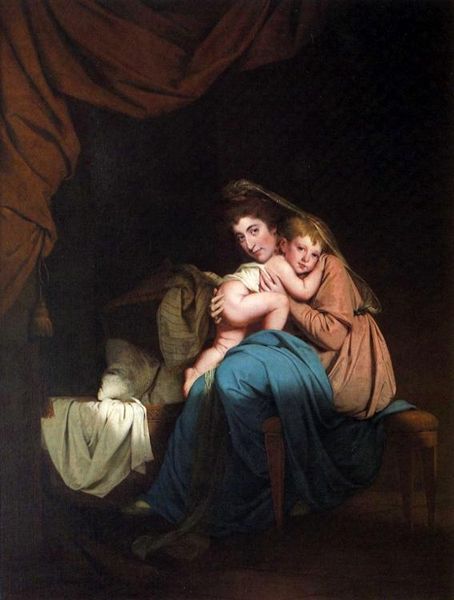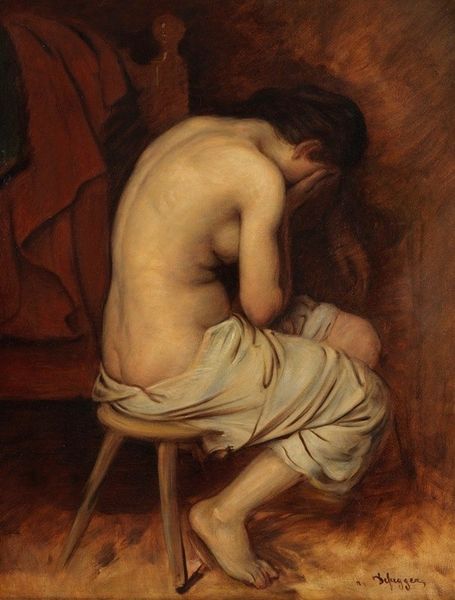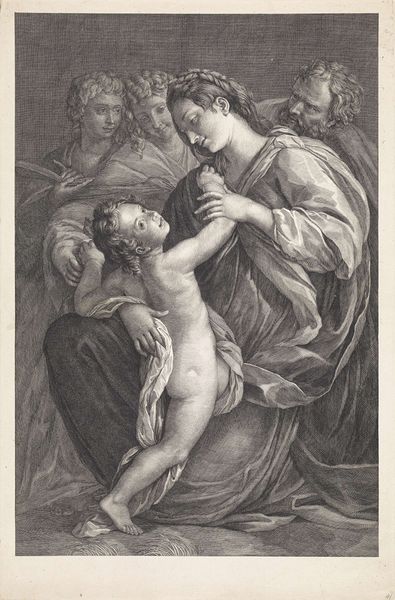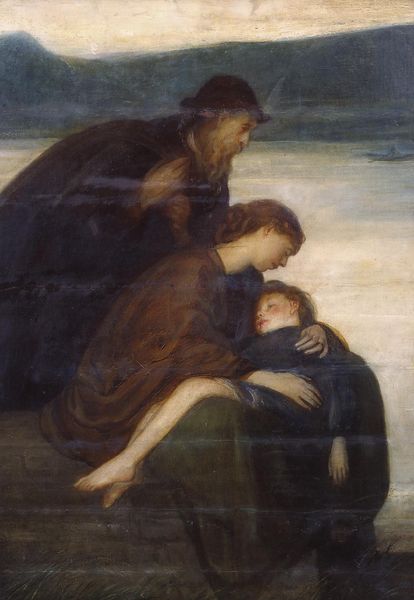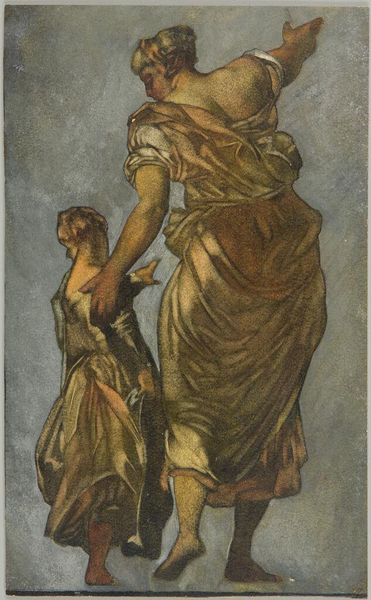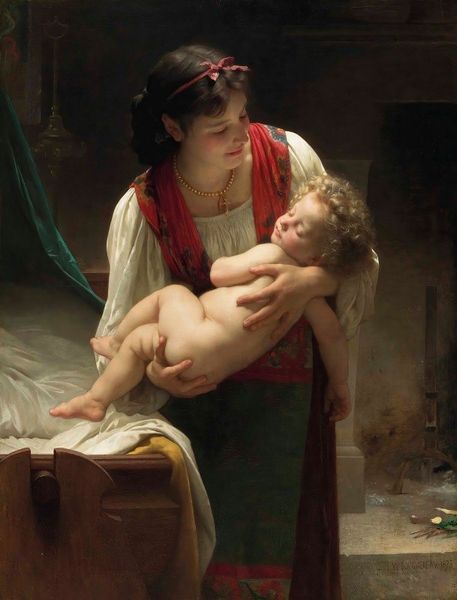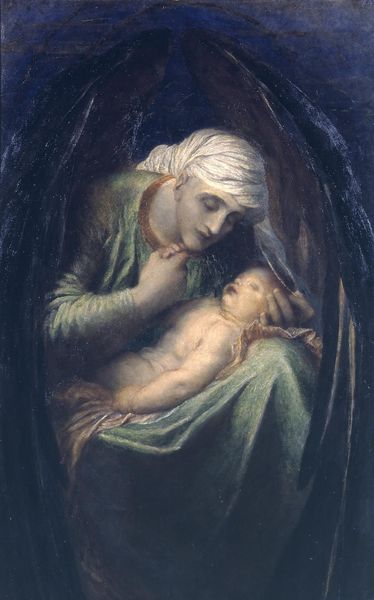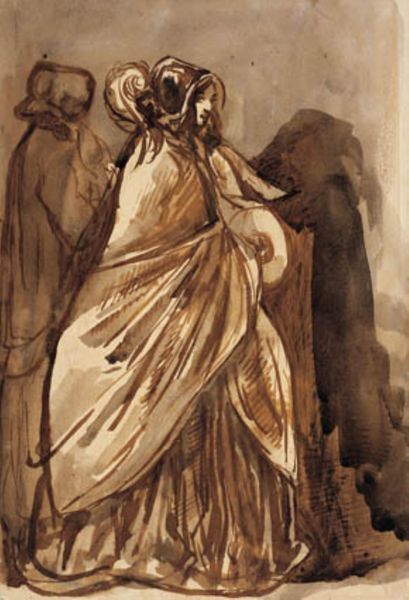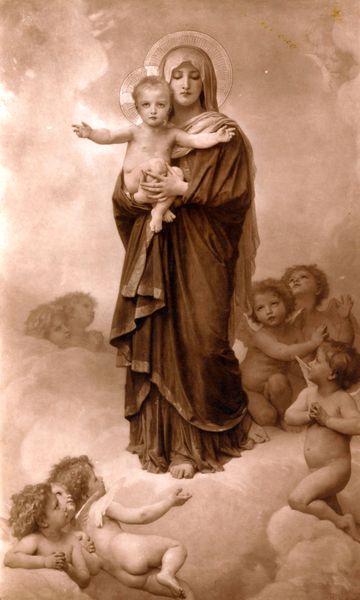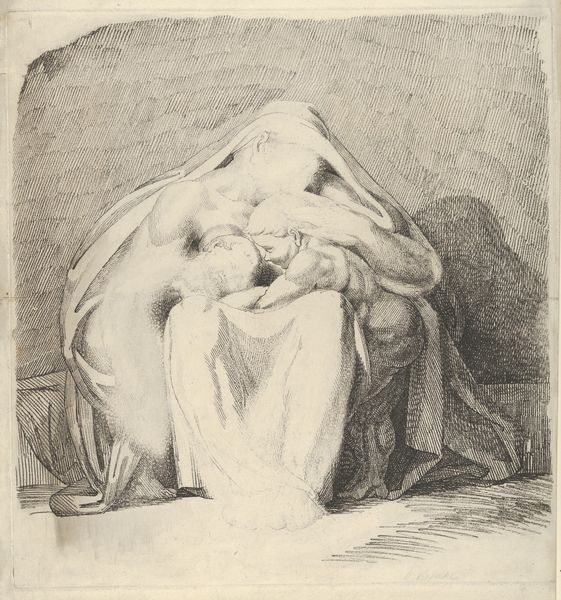
watercolor
#
portrait
#
narrative-art
#
figuration
#
watercolor
#
romanticism
#
genre-painting
#
portrait art
#
watercolor
Dimensions: 64.8 x 127 cm
Copyright: Public domain
Editor: So this is “Young Beggar,” a watercolor piece by Gustave Doré. The figures appear quite vulnerable, and the image has a muted palette, giving it an overall somber mood. How do you interpret this work? Curator: I see a powerful commentary on the socioeconomic conditions of the time. Doré was known for depicting the realities of urban poverty. Considering his activism through art, look at how he positions the young girl: not just as a subject of pity, but embodying a burdened matriarchal figure despite her own youth. What does it mean when children are forced to become caregivers? Editor: I hadn’t considered the matriarchal aspect. It makes me think about gender roles within impoverished communities. Does her gaze play into that interpretation? Curator: Precisely! Her direct, almost accusatory stare challenges the viewer. She’s not asking for your sympathy, she's demanding recognition of her plight. Think about Victorian society's expectations of women and children versus the reality faced by those in the margins. Is this just Romanticism, or something more subversive? Editor: So it’s less about aesthetics and more about social commentary and pushing against the expected role of children in paintings? Curator: Exactly! By situating this “genre painting” within broader societal injustices related to child labor and gender inequality, it resonates far beyond a simple portrait. Editor: This really changes my understanding of the piece. It is far more powerful when considering social contexts. Curator: Indeed. Doré uses art as a lens to critique power structures. Hopefully, this prompts us to look deeper and think critically about similar struggles reflected in contemporary society.
Comments
No comments
Be the first to comment and join the conversation on the ultimate creative platform.
